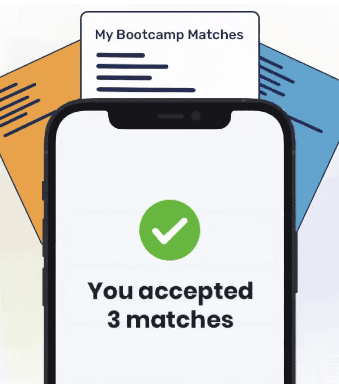Are you interested in pursuing a career change to IT or into the tech field? This is a popular goal, as jobs in the technology industry are known to come with high salaries and strong benefits. Luckily, making a career change to tech is very possible, regardless of your professional and educational background.
This guide will provide all the information you need to get started on your tech or IT career change. We detail the required skills for popular job titles, educational opportunities to help you get qualified, common pitfalls and how to avoid them, and more.
Why Transition to Tech?
Many people choose to make a career change to IT or another tech field because these careers have particularly high job growth rates and salaries. Additionally, tech jobs require a great deal of problem-solving and creative thinking, which is appealing to many analytical thinkers.
In-Demand Field
With our increasing reliance on technology in almost every aspect of life these days, workers with strong tech skills are in high demand. For example, the Bureau of Labor Statistics projects that software developers have a job outlook of 25 percent and information security analysts have a job outlook of 35 percent.
Stimulating and Challenging Work
Careers in technology not only have attractive job prospects, but you’ll also be able to work on challenging and interesting problems each day. You’ll be involved with developing technologies other people will use, and you’ll help companies reach their goals. Indeed, jobs in technology can be fulfilling, and provide the right balance of challenging tasks and interesting work.
High Salaries
Because tech skills are in such high demand, professionals in this field generally earn above-average wages. This can even be true for entry-level positions. For example, Glassdoor reports that entry-level software engineers make an average salary of $98,934 per year.
Do I Need a Tech Degree to Transition to a Tech Career?
You do not necessarily need a tech degree to transition to a tech career. Coding is less traditional than in other industries. While many managerial positions in the industry require university degrees, many employers value your experience and skills more than your credentials.
Instead of spending four years on a degree, you can master in-demand tech skills through independent study or by enrolling in online courses or a coding bootcamp. This can also be beneficial because it allows you to focus on the specific skills and tools you need for your chosen job.
It is also important to evaluate your current skills before making the transition. This way, you can evaluate what you have to offer in your new position and what you need to work on. Take our free tech career quiz for guidance.
How to Transition to a Tech Career
Making a major career change, like a transition to a tech career, can seem overwhelming, but it is very possible if you break down the process into smaller, achievable steps. The following section will detail how to transition to a tech career in seven detailed steps.
Step 1: Prepare for the Change

Before you commit to a single path in technology, you need to consider whether or not a career in this industry is for you. Firstly, you should make sure that you are in the right mindset for a career transition. It’s easy to say that you want to pursue a career in tech, but it’s another thing entirely to commit to the transition. When you’re thinking about a job in technology, make sure that you have good reasons for doing so.
If your mind is telling you that you have other commitments, or that you are already happy in your current job, then perhaps it’s not the right time to pursue a tech career change. Either way, make sure you have cleared up whether you are ready to make a transition. If you do this upfront, you’ll be less likely to change your mind halfway through your journey.
Signs You’re Ready for a Career Change
Before you start to find the right career for you, take a moment to reflect on whether you are ready for a career transition. Some common signs that you should change careers include:
- You are not passionate about your current job
- You lack motivation
- You are not feeling challenged
- You are always looking forward to the weekends, and dread showing up for work
If you feel any of these symptoms, or if you just feel as if you are ready for a new professional challenge, a career in tech may be right for you.
Reflect on Why You Want to Change Careers
After you have established whether you should consider transitioning into a career in technology, you should start to think about your motivation. There are a few questions you should ask yourself, which include:
- Why do you want to transition to a job in tech? Are you unsatisfied with your current job? Do you like to work on difficult but interesting problems? Whatever the reason, make sure you have one. If you have an answer about why you want a new career in tech, it will be easier to determine which path is for you later on.
- What are your long-term career goals? What sort of work-life balance is important to you? You should think about where you want to be in the future, and ask yourself whether a job in tech will help you get there. If you want to be working on meaningful, challenging, or interesting problems, for example, a career in tech may be for you.
- What matters to you in a job? What do you not enjoy about your job right now? Will a career in tech help you obtain the things you seek in your ideal job? Make a list of what matters to you in your work, and think about whether a career in technology will help you get there.
Write your answers to these questions on paper so that you can see what you are thinking, and so that you have a record of all your opinions on your career transition. These original goals will help you further down the line so that if you ever lose confidence in your career transition, you’ll have this reminder to convince you to stay on track when things get tough.
Ignore Imposter Syndrome
There are many valid reasons to choose not to start a new career in tech, but make sure anxiety and self-doubt aren’t the things holding you back. Technical skills aren’t as difficult to master as they may seem when you first start out. If you are doubting your ability to succeed, try signing up for a few basic courses to dip your toe into the field and slowly gain your confidence.
Don’t Quit Your Job Immediately
Career transitions do not happen overnight. They will take months of hard work and tireless effort to make your tech career change a reality. And during this process, it’s helpful to have a paycheck you can use to pay for essentials, even if it does mean working in a job that you ultimately want to leave.
You’ll need at least a few months of training before you will have the skills for an entry-level IT job. Many educational opportunities, such as part-time coding bootcamps and online courses, are perfect for people who are trying to master new skills without quitting their day jobs. It is advisable to put resigning on hold until you are sure that you are ready to transition into a new career.
Step 2: Research Jobs in Technology
If you think a career in tech may be worth exploring, your next step is to do some research about what jobs are out there in the industry. This research will help you build up a more complete picture of what to expect from working in the tech industry, and will make it easier for you to decide what jobs you may want to explore further down the line.
Learn About the Different Types of Technology Jobs
Before you start researching companies and jobs in tech, you should know what you’re looking for. Later in this guide we’ll discuss a few jobs you may want to pursue, but first, we should discuss the two main categories of jobs in tech: technical and non-technical.
Technical Jobs
Technical jobs are positions where you will be required to code or use a technical and analytical mindset to solve difficult problems. These types of jobs in tech include web developer, mobile app developer, and hardware engineer, among others.
Non-Technical Jobs
Non-technical jobs in tech are positions where you will not be involved in the creation or maintenance of new technology. An example of a non-technical job is a technical salesperson, whose job it is to sell a company’s technology to prospective and existing customers. Other examples include product managers, customer success representatives, and digital marketers.
Consider Both Technical and Non-Technical Tech Jobs
You should ensure that you look at both technical and non-technical roles. Non-technical members of a tech company are crucial parts of the team, even though they are not directly involved with the development of new technology.
If you are coming from a non-technical job in tech, such as sales, business management, or marketing, you may want to consider what roles in tech exist that let you transfer your current skills. For example, if you are a marketer, you could become a digital marketer; if you were a salesperson, you could learn about technical sales.
List Your Top Companies and Why You Want to Work for Them
Make a list of the companies you want to work for, even if working for them right now seems unattainable. If you want to work for Google, add it to your list, if you want to work for Slack, note the company down on your list.
Alongside the company’s name, write down what makes you interested in them. Do they have good company cultures? Are they working on interesting problems? This will help you get a better picture of what careers in tech look like and will help you better evaluate whether a job in tech is for you. Having a goal to strive for can also help you stay motivated.

"Career Karma entered my life when I needed it most and quickly helped me match with a bootcamp. Two months after graduating, I found my dream job that aligned with my values and goals in life!"
Venus, Software Engineer at Rockbot
Understand Job Descriptions and Responsibilities for Various Roles
After you have made this list, you should look for job openings from those companies. Read through the job descriptions and figure out what companies are looking for in prospective candidates. This will give you a greater sense of the skills companies are looking for in technical employees, which you can use to develop your short-term objectives.
Look through job descriptions in a variety of different technical and non-technical roles as well. This will help you understand more about the specifics of each role, so you can make a more informed decision about your future path into a career in tech.
Some of the roles you may want to search for include mobile app developer, web developer, machine learning engineer, data scientist, digital marketer, and software engineer. The more roles you research, the better you’ll be able to understand what’s out there.
Research Roles Using Online Career Resources
After you have read through a few job descriptions, you can then start to do more in-depth research into those careers. You can use sites such as LinkedIn and Glassdoor to get a sense of the skills you may need and the salaries you can expect in different types of positions.
When researching what salary you could earn in different roles, make sure you look into entry-level salaries. Depending on your current role and educational background, it might take several years until you earn the average wage for the field.
Step 3: Choose a Career in Tech
After you have done some research about what careers you can pursue in technology, you should start to think about choosing a particular path. There are dozens of jobs out there in the technology sector, some of which do not even require any coding. In order to make a successful career change to tech, you’ll need a specific goal in mind.
Tech Career Options for Career Changers
This is only a small list of the dozens of careers available in technology, and new types of jobs are opening up each year. Here are a few paths you may want to consider for your career change to IT.
- Web Developer. Web developers are responsible for creating and updating websites based on a set of requirements. Front end web developers create the user interface for a website, while backend web developers build the infrastructure that makes an application function, and at the same time, store and manage data for that application.
- Data Scientist. A data scientist is someone who gathers and processes data to solve a particular problem. Data scientists use the information obtained from an application or website to help a business understand its users and to improve the quality of its services.
- Mobile App Developer. Mobile app developers create functional apps for people to use on mobile devices, such as iPhones and Android devices. iOS developers create, update, and maintain applications for Apple phones, while Android developers create and manage apps for Android-powered phones.
- User Interface (UI) Designer. UI designers are responsible for creating the design of a product. They choose the colors, typography, and format of a website, and decide how particular parts of a website will appear to users. After they have drawn up a design, they pass it on to a front end web developer to execute their vision.
- Digital Marketer. Digital marketers are responsible for raising awareness for a company’s brand and generating leads that may turn into customers in the future. Digital marketers use technologies such as email marketing, social media marketing, and web advertisements to engage a company’s audience.
How to Choose a Career
When you’re thinking about which role is right for you, focus on what you want to get out of a job. In Step 1 we wrote about why you wanted to make a transition into a career in tech, and what you wanted to get out of your new job. Think about what you wrote again and use that information to help you decide which careers are for you.
Choosing a career is important because it will allow you to focus your efforts when you start to look for training programs. Having an idea of what career in technology you’re interested in will also make it easier for you to find resources and guides which can assist you along your journey. It’s worth noting that you don’t need to commit to a single path as soon as you decide to change your career.
Take some time to evaluate the different careers out there, and perhaps even try out a few online courses to determine which tech specialization interests you most. Then, after you feel confident about what career you want to pursue, you can move on to the next step of your transition.
How to Figure Out What Tech Job Is Best For You
To help you figure out which job in tech is best for you, try this:
- Write down your main characteristics. Do you enjoy technical work, or do you prefer work that requires more interpersonal skills? Think about which roles in technology might make the best use of those characteristics.
- Reflect on the work you have done in the past, and the work which has made you happiest. Were you leading a team, or were you working on an analytical task?
- Think back to your job description research and consider which jobs offered the type of work you were doing.
Transferable Skills That Translate Into Different Technology Careers
Here are a few skills which directly translate into different careers in technology:
- Team building and employee relations → Customer success, HR, business development
- Building products → Software developer, project manager, operations director
- Product analysis and design → UX/UI designer, UX researcher, business development, operations
Step 4: Learn the Skills: Education Options for Tech Career Transitions

You have decided to transition into a career in technology, have researched the options that are out there, and you have chosen a field you want to explore in more depth. Now, you probably have a list of tech skills to learn before you can start applying for jobs. To begin learning, there are a couple of different paths you can take.
Computer Science Degree
Firstly, you can attend a computer science degree program at a traditional college or university. This approach will allow you to explore the computing industry in-depth, and build a more complete picture of what computing science is all about. In addition, you’ll earn a degree at the end of the program, which will set you up for attractive tech careers in the future.
Advantages of Earning a Degree
The most important advantage of earning a degree is that many employers prioritize applicants with a bachelor’s degree. A full degree program will ensure that you have a comprehensive understanding of the field and will prepare you for a wider variety of tech roles.
Disadvantages of Earning a Degree
Many working professionals don’t have the time to spend four years getting a new degree. Even accelerated programs require at least three years. Additionally, getting a degree is expensive, and not every course you take will be relevant to your chosen career path.
Self-Teaching
Many students decide to teach themselves about programming and work their way up the ladder in tech companies. If you’re interested in going down this path, there are many resources you can use. There are thousands of tutorials, videos, and free online courses about web development, software engineering, and more, which you can use to familiarize yourself with the fundamentals.
Advantages of Self-Teaching
Self-teaching is an attractive approach because you’d be able to learn at your own pace and you can focus on exactly what you need to know to succeed. Self-teaching is the most affordable option, especially with the availability of free online resources, and won’t require you to scale back your hours at your current job.
Disadvantages of Self-Teaching
A major flaw of this method is that it’s easy to accidentally skip over key ideas because you have no teacher to guide you along the process. On top of that, teaching yourself how to code does not give you any credentials, which may make your job-finding process difficult. While some online courses provide a certificate of completion, you will need a very impressive portfolio to be competitive against applicants with a degree.
Coding Bootcamps
Coding bootcamps are short, intensive, employment-oriented programs designed to help you master the skills you need to break into a career in technology. During a bootcamp, you’ll learn everything you need to know about a specific field in technology and build a portfolio to showcase your skills to employers.
Advantages of Coding Bootcamps
Bootcamps allow you to specialize in a particular field of tech and spend more time learning about the specific skills you need. For example, many bootcamps offer courses in niche topics such as cyber security and user interface design, which allows you to specialize in the field.
You can also access a range of career services from a bootcamp that are designed to help you land your first job after graduation. These services often include career workshops, mock interviews, and access to an employer network.
Disadvantages of Coding Bootcamps
While coding bootcamps are cheaper than degree programs, they can still be very expensive. Most coding bootcamps cost between $13,000 and $20,000. Additionally, bootcamps are not accredited, so not every employer will respect a bootcamp education as highly as a traditional degree.
Step 5: Showcase Your Knowledge and Build Your Presence
While you are learning the skills you need for your new career in technology, you should start to build an online presence. This presence will soon become your personal brand, meaning it will be how people see you when they discover you on the Internet.
Your personal brand will reflect your experience, interests, and the way you communicate. Your online presence should tell the story of who you are, where you have come from, and who you want to be. The following section will go over how to build an online presence that will showcase your technical resume.
Build a Personal Website
The best way to boost your online presence is to build a professional website. Personal websites give you a professional profile to link when people ask about your work and collate all of your experience into one place. Your personal website will become a living document showcasing your skills to the rest of the world.
Your personal website should showcase your growing knowledge and abilities. Every time you work on a new project or learn a new skill, add it to your website. When you are ready to start looking for jobs, you can use your personal website as a portfolio to showcase your practical skills and past experience to employers.
Add a Blog to Share Your Skillset and Passions
In addition, it can be helpful to start a blog on your website where you talk about the skills you are learning. Writing about what you are learning is not only a great way for you to reinforce your skills and revise material, but also allows you to teach other people in the process.
When you’re ready to start looking for a job, you can show your blog to an employer, which will give them a quick indication of who you are both as a candidate and a person. Your blog will convey your communication skills and your learning aptitude and give an employer an insight into how you think about the world.
Complete Projects
Completing projects will do more than give you content to improve your website. For most students, projects are the best way to put your skills to the test and see what areas need improvement. There are many coding project ideas on the Internet that can give you hands-on experience and help you practice your skills while enjoying the process of broadening your knowledge.
Build a Portfolio
In your tech portfolio, talk about your past experiences that might be relevant to your desired role. Also, talk about your long-term goals and what type of projects you enjoy working on. This will give the world a better sense of how you work and will help employers evaluate whether you are the right person for their team.
If you want to learn more about the process of writing a strong portfolio, you can check out our full stack developer portfolio guide, or our UX/UI designer portfolio guide for more detailed information.
Step 6: Build Your Network

One important part of going through a successful career transition is having a network of other people with whom you can talk and seek support. You’ll want to connect with others who are already working in the industry you want to venture into. Keep reading for tech career networking tips to help you build relationships with other students and experts in your field.
Why You Should Network
The relationships you build with professionals in your field can lead to introductions to other companies who are hiring, internal referrals, and useful advice that can guide you through your transition. While you’re learning about a particular industry, research a few people who are already employed in-field and ask if you can meet up with them to discuss your transition.
Sites to Help You Network
Sign up for an account on Twitter and LinkedIn, and use these platforms to connect with people who work at your dream companies. You may be thinking that having a Twitter account is not relevant, but it is a popular tool for developers and other tech workers who want to build new connections. You should reach out to people on these platforms and ask if they would be willing to chat with you briefly about their experience.
Questions to Ask While Networking
The main goal of these discussions is to learn about what it’s like to work for that company and work in the position you are interested in. Tell the other person why you want to work in the field, and ask them for any advice they have. This will allow you to get a sense of what you can expect in the future from someone who has been through it all before.
These discussions will allow you to learn about common mistakes made by beginners like yourself and learn the best ways to make yourself stand out. You may also want to ask:
- Do you know of any helpful resources that could assist me in my learning?
- What books do you recommend?
- Could you tell me more about your technical interview?
- What is the culture like at X company?
- What can I expect when I start applying for jobs?
- What does the day-to-day work look like as a Y professional?
Don’t Forget to Follow-Up
After you’ve spoken with the person, follow up via email as soon as you can. It’s important that you thank them for their time, and you should also mention what you learned and what advice you found actionable. Do so in only a few paragraphs to make sure the other person can easily read your email.
Then, you should start following their advice. For example, if they have told you about a few great resources, check them out and figure out whether they are for you. Keep the person in the loop when you make progress, and thank them again if their advice proved useful over the long term.
Step 7: Prepare for the Job Search
After spending a few months, or even years, getting ready to switch careers, you are probably eager to start your tech job search. Below, we will walk you through the process of writing a technical resume and cover letter and preparing for your technical interview.
Write a Technical Resume and Cover Letter
Once you find a job opening that you are qualified for, you’ll need to perfect your technical resume and cover letter. There are many technical resume guides that can give you some ideas if you need help getting started. The most important thing to remember is that you should adjust your application to match each application.
Use the job description as a resource and make sure you use the same vocabulary and mention the same tools to show the hiring manager that you are the right person for the job. If you don’t have all the required technical skills, don’t forget to highlight how your work experience has provided you with essential transferable skills that have prepared you for the role.
Prepare for Technical Interviews
Technical interviews are one of the most important aspects of the job search because they are your best chance to show employers that you are qualified for the role. To prepare, go back to the original job description and review what specific skills they are looking for. These are the skills most likely to come up in technical questions.
You can prepare for your technical interview by reviewing the basics, going over past projects and seeing where you made mistakes, and by completing practice questions. During the interview, remember to ask clarifying questions to ensure you fully understand what is being asked and think out loud so the interviewer can understand your process.
Transitioning Into a Career in Technology
A career move can take a lot of work, but if you’re looking for a fulfilling and worthwhile change, look no further than jobs in tech. Tech jobs will allow you to access good prospects while working on interesting and challenging problems. If you’re ready for a new challenge, a career change to IT or another tech area may be for you.
Tech careers offer strong salaries and particularly impressive job growth rates. Whether you want to work in a technical role or a non-technical role, like marketing or sales, you can have a big impact on a company and its technology. The right mix of technical skills, problem-solving skills, and perseverance is all you need to succeed in your new field.
Ultimate Guide to Tech Career Transitions FAQ
Some tech careers that are easier to transition into as a second career include front end developer, computer programmer, and database developer. However, ultimately the answer to this question will depend on your previous experience and natural skills.
How can I change careers to IT?
You can change careers to IT by choosing a specific role that interests you and then developing the technical skills you need for entry-level positions. Some roles will require at least a bachelor’s degree in a related field, but many people are successful in tech with a coding bootcamp certificate or self-taught skills.
Which IT career is right for me?
The right IT career for you will depend on your educational and professional background, as well as your personal interests. If you enjoy working with numbers and statistics, you may want to become a data analyst, while if you are a naturally creative person who enjoys working with other people, a role as a UX/UI designer might be a better fit.
What is the highest-paying IT career?
The highest-paying IT careers include chief technology officer, information security architect, computer research scientist, and DevOps engineer. All of these positions can help you earn a salary well over $100,000 a year.
About us: Career Karma is a platform designed to help job seekers find, research, and connect with job training programs to advance their careers. Learn about the CK publication.



